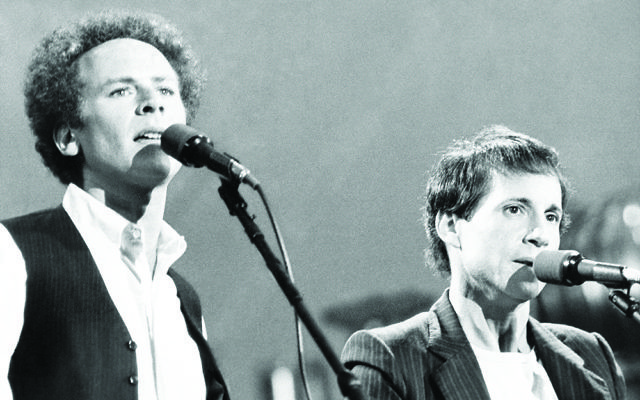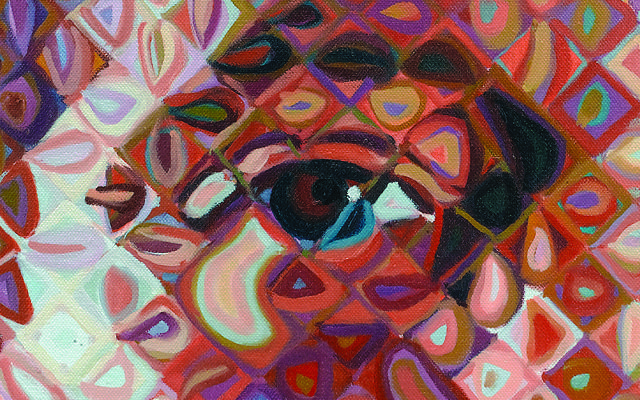The return of rhyming Simon
Legendary singer-songwriter Paul Simon tells Andy Welch about his 13th solo album and how he still comes up with new material
Paul Simon was just a teenager when he released his first single. And since he and school friend Art Garfunkel – under the name Tom & Jerry – put out Hey, Schoolgirl, he has covered more musical ground than most artists who have come and gone in the intervening 60 years.
The American Jewish musician’s forthcoming album continues that onward progression, and carries his career, in which he’s barely put a musical foot wrong, well into its seventh decade.
Stranger To Stranger is his 13th album, on which he fuses traditional folk with electronic beats, African, Indian and South American rhythms, while toying with the concept of microtonality – the idea music isn’t formed of the 12 notes we recognise in Western music, but 43 notes, separated by tiny steps. It gives it a bit of an otherworldly feel, as if recorded between awake and asleep.
There’s a five-year gap since his last album, So Beautiful or So What, a pattern for previous records too, which suggests Simon, 74, really took his time recording it. He says that’s somewhat deceiving, as he toured So Beautiful Or So What for 18 months after its release, and finished Stranger To Stranger more than six months ago.
“It’s not as long as people think, or how it may look. My cycle is usually about three years, but this was a little longer because it was more difficult than the last couple have been. Why is that? It just is, and I suspect it will be like that from now on, if there is a now on,” he remarks.
He explains that his past work makes it difficult for him to write new songs. Essentially, when you’ve set the bar as high as, say, Bridge Over Troubled Water, it’s difficult to write new material that lives up to it.
“And I’ve written a lot of songs,” he continues.
“I do something and I think: ‘I already did that’, and I don’t want to repeat myself, or I start a rhythm and it sounds like Cecilia, or Graceland or whatever.
“Not that I am opposed to using elements from old records,” he adds. “It’s a nice way of keeping a continuity of sound going through your music, but other songs I’ve written provide obstacles.”
He knows when it’s time to make another record – when he starts feeling anxious or depressed, he says. Rather than succumbing to the emotion, he recognises it as a signal to get working. From there, it might take him another six months to form a strong idea, and only then does the record begin to take shape.
“My ideas fall into two categories; ballads, or a more rhythmic premise. Ballads will have lots of chords and interesting phrases. The purest example of my rhythmic songs are on Graceland,” he says, referencing his landmark 1986 album, for which he teamed up with African musicians, including Ladysmith Black Mambazo.
“When I’ve finished an album, I feel completely done and I have no idea what to do next,” adds the New Jersey-born singer-songwriter. “And that’s good, you don’t want to finish a record thinking about all the things you wished you’d done, you want to have an empty tank. If I felt like I had something else, I would’ve continued until I ran out.
“I start from zero, which feels like not starting at all, and I end when I can’t do any more.”
Among a wide range of musical instruments used on Stranger To Stranger, from synthesisers and cloud-chamber bowls, to little-known African woodwind instruments and Peruvian drums, sits the chromelodeon. The instrument was invented by 20th century composer Harry Partch, who devised a system of 43 notes.
“Partch said 12 notes in an octave was arbitrary division, and there were really 43 notes. Which I guess is arbitrary too, in a way, but that’s the way he saw it. In order to compose using those notes, he had to invent something to play them, so he made about 10 different instruments,” Simon explains, adding that he has since bought his own chromelodeon to use again.
What’s also striking about Stranger To Stranger is the sense of space. While there are scores of different instruments on there, it never sounds as if more than a few are playing at once.
“That’s all part of the plan”, says Simon, who likes to take things away from his songs until there’s almost nothing left, to see how they stand up.
“I might have something that’s hampering the enjoyability of a song, and in that case, take it out and see what you have left,” he explains.
”If you don’t need to write something, or it doesn’t need to be there, take it out and leave it out.”
He says the best example of that comes from Simon & Garfunkel classic The Boxer, with its ‘lie-la-lie’ refrain. Simon actually sang that as a placeholder and meant to write some lyrics in at a later date, but couldn’t think of anything that better suited the song, so it stuck, eventually becoming the most-loved thing about the song.
“But I never knew how things were going to be perceived,” he admits. “And I never knew what was going to be a hit.
“I didn’t know Bridge Over Troubled Water was going to be a hit. I’m really proud of it, it’s really good, but I thought it was too long, and just a piano and voice… Who would have thought Graceland would be a hit? I could see it as a hit, but I could see it as a flop, too. The main thing is whether I think it’s interesting,”Simon continues.
“I didn’t think 50 Ways To Leave Your Lover was going to be a hit, just as I didn’t know [1997 soundtrack to his disastrous musical] Songs From The Capeman was going to be a flop, but it was a huge flop. You don’t go into these things thinking about what comes after.”
• Paul Simon releases his new album Stranger To Stranger on 3 June. He begins a UK tour on 3 November. For dates, visit www.paulsimon.com

Thank you for helping to make Jewish News the leading source of news and opinion for the UK Jewish community. Today we're asking for your invaluable help to continue putting our community first in everything we do.
For as little as £5 a month you can help sustain the vital work we do in celebrating and standing up for Jewish life in Britain.
Jewish News holds our community together and keeps us connected. Like a synagogue, it’s where people turn to feel part of something bigger. It also proudly shows the rest of Britain the vibrancy and rich culture of modern Jewish life.
You can make a quick and easy one-off or monthly contribution of £5, £10, £20 or any other sum you’re comfortable with.
100% of your donation will help us continue celebrating our community, in all its dynamic diversity...
Engaging
Being a community platform means so much more than producing a newspaper and website. One of our proudest roles is media partnering with our invaluable charities to amplify the outstanding work they do to help us all.
Celebrating
There’s no shortage of oys in the world but Jewish News takes every opportunity to celebrate the joys too, through projects like Night of Heroes, 40 Under 40 and other compelling countdowns that make the community kvell with pride.
Pioneering
In the first collaboration between media outlets from different faiths, Jewish News worked with British Muslim TV and Church Times to produce a list of young activists leading the way on interfaith understanding.
Campaigning
Royal Mail issued a stamp honouring Holocaust hero Sir Nicholas Winton after a Jewish News campaign attracted more than 100,000 backers. Jewish Newsalso produces special editions of the paper highlighting pressing issues including mental health and Holocaust remembrance.
Easy access
In an age when news is readily accessible, Jewish News provides high-quality content free online and offline, removing any financial barriers to connecting people.
Voice of our community to wider society
The Jewish News team regularly appears on TV, radio and on the pages of the national press to comment on stories about the Jewish community. Easy access to the paper on the streets of London also means Jewish News provides an invaluable window into the community for the country at large.
We hope you agree all this is worth preserving.























